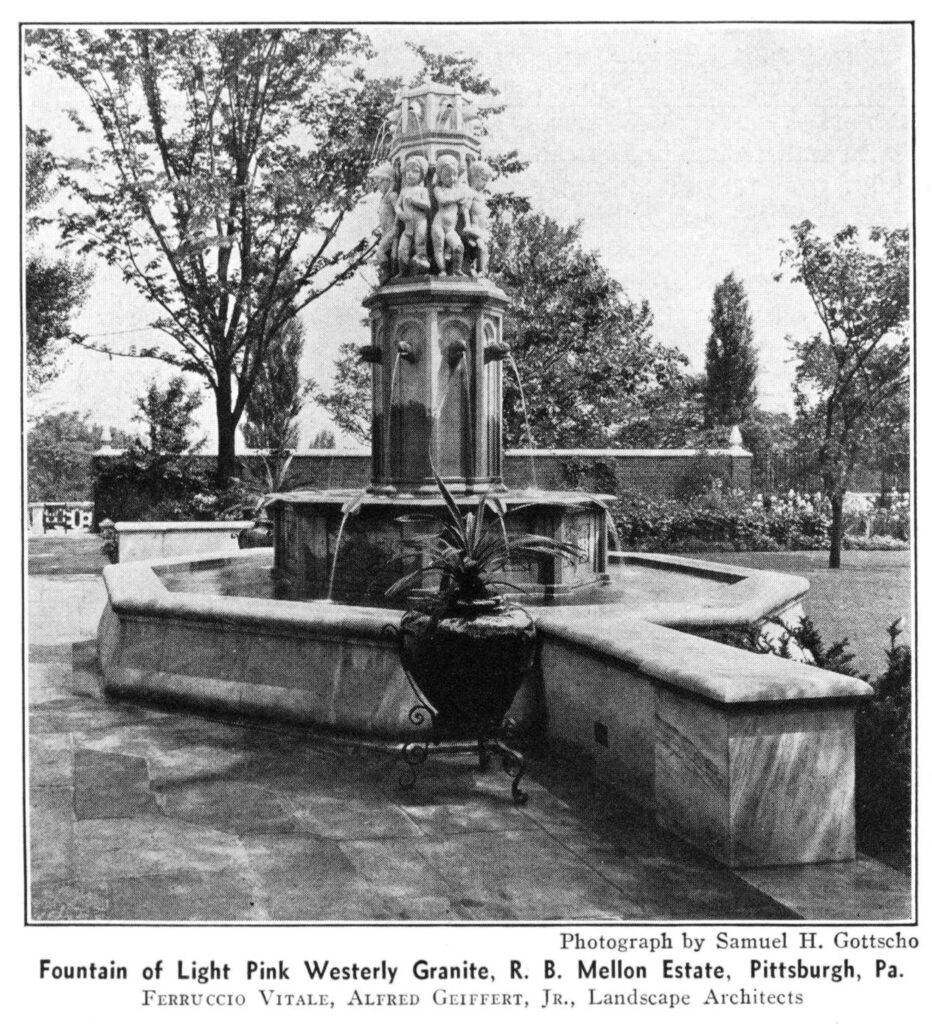
Comments

In theory there is no reason to take digital pictures in black and white, since they can always be desaturated later. In practice, knowing that the picture will never have any colors in it makes one think more in terms of lines and shadows. Here are two pictures taken with a camera from the Neolithic era of digital cameras, which Father Pitt keeps set to black-and-white mode.


Courtesy of the New England Granite Works, a picture of the fountain in the Mellons’ Walled Garden shows us a little of what the garden, now part of Mellon Park, looked like when the Mellons lived there. The sculpture on the fountain is the work of Edmond Amateis, and the fountain has been beautifully restored for the delight of visitors to the park.
